In the last post we wrote, we talked about brewing on a commercial scale, and brewing “big”.
The one thing we didn’t talk about was: how big?
And this is really the most important question you need to answer when you’ve decided to open a brewery.
It’s fairly simple. If your brewery is too small, you can’t supply willing and eager beer fanatics with your delicious beer. At a bar or restaurant, especially one with a lot of taps, you can lose your tap location if you run out. And
maybe the next beer that makes it on there is just about as good as
yours, and is never out of stock… then you may lose the entire account. And that’s bad.
If your brewery is too big, you may have just spent too much money on a system that isn’t fully utilized. You
will need to pay off the loans used to purchase the equipment, or pay
the rent on the rather large space you need to house the oversized
brewery. And if you aren’t selling enough beer to pay the bills, guess what? You won’t be making beer for very long…
So how do you determine how big the brewery needs to be? How do you know how many people will actually drink your beer? It really isn’t easy. We’ve taken a fairly practical approach. We’ve looked at Census and Gallup data. We’ve catalogued our potential customers for the next several years in this area. And we’ve asked around to find out exactly how many people are drinking at these bars and restaurants. Through
this process, we thought we came up with a pretty good “forecast”, and
thus a brewery size: 3 barrel (6 x ½ keg) brewhouse, with several 7
barrel fermenters.
And then…
It seems like every brewery, in all of America, is expanding. Check out the links on Google for “brewery expansion”. I searched through five pages before I even came to a 2011 article. We were lucky enough to meet the owners of an expanding brewery recently. Good Nature Brewing,
who own a 2 barrel system (4 x ½ barrel kegs per batch) and have been
open for just over 6 months, are already expanding to a 7 barrel system. They explained their story to us over several of their tasty and wonderful beers. They do almost their entire business out of their tasting room in growler fills and keg pickups…. and, they are based in Hamilton, NY, which is 35 to 40 times smaller than Buffalo. Not that there’s anything wrong with that! But we had planned to be on a 3 barrel system and supply all of Buffalo-Niagara’s regional bars and restaurants with beer. Now, we began to think that a 3 barrel system might not be enough to supply our tasting room!
We’ve seen it go the other way too… where the brewery starts too big and never gets out of debt. We’d definitely rather be too small and occasionally run out of supply than be stuck in debt-hell forever. It’s
easier to expand once you’re open, with a proven business model, than
to acquire enough money to buy a huge system with no proven track
record. There are other benefits of brewing small: the
beer tends to be fresher since it turns quicker, and the loss incurred
by scrapping any batches gone awry (either as an experimental batch, or…
gasp… unintentionally) is much less.
At the same time, we really want to make sure that
when we launch, we can get everyone that wants to drink our beer…. um,
our beer.
The fact is, we’re still struggling with what we feel will be a good size for our brewery. Brewers, business folks, general beer loving population… what do you think? As always, we’d love to hear from you. Facebook, Twitter, email, you know the drill. We can probably figure this out without you, but we’d much rather do this with your help. Thanks!
